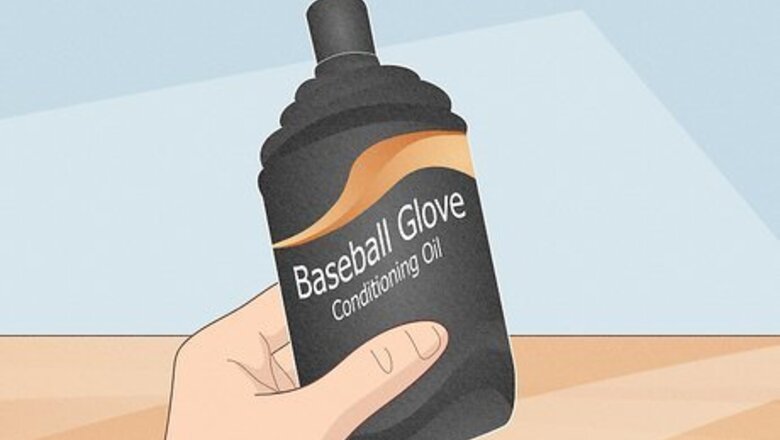
views
Softening with Sunlight and Conditioning Oil
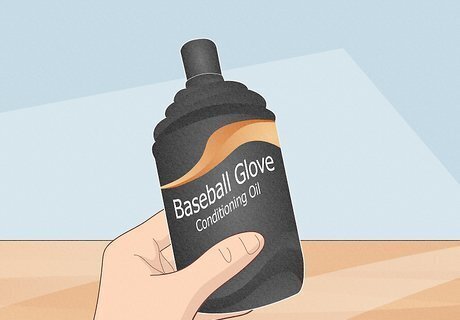
Purchase baseball glove conditioning oil. Most manufacturers offer oils specifically formulated to treat their gloves. Applying a small amount of conditioning oil will soften, enrich, and preserve the leather in the pocket of your glove. You can use some shaving cream with lanolin in it as a cheap alternative to conditioning oil. Do not use too much oil or cream on your glove. Applying too much can cause the leather to deteriorate. Use just enough to apply a light coating all over the pocket.
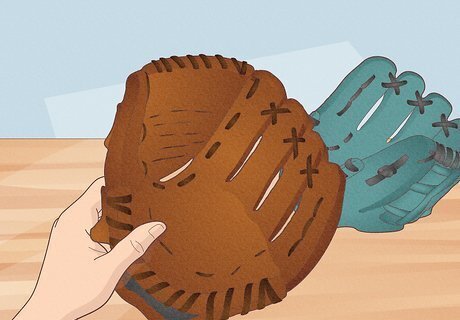
Use a baseball glove or a softball glove. They're not the same thing. Softball gloves have slightly larger pockets to fit the slightly larger ball.
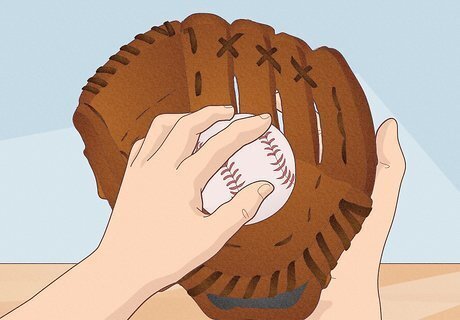
Put a ball in the glove. Put it in the "sweet spot." The sweet spot is where you would ideally catch the ball, in the lower part of the webbing between the thumb and forefinger.
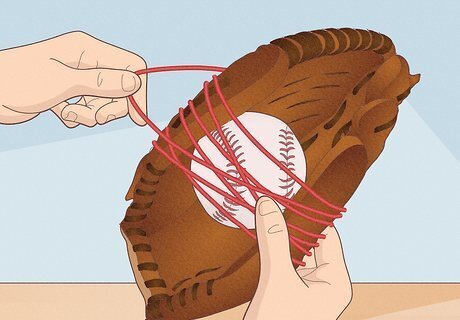
Wrap several large rubber bands around the glove with the ball inside. The bands should be tight so that the ball rests snugly in the pocket of the glove and not be able to move around. This is to shape the pocket to fit the ball. Don't use string for this. Tightly wound string or twine can leave an odd-looking imprint around the outside of the glove.

Leave the band-wrapped glove out in direct sunlight for a few hours (no more). The sunlight will make the leather warm and flexible. Do not leave the glove on a hot surface. You don't want to cook it.
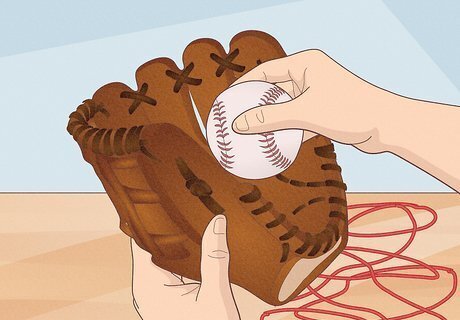
Take the glove out of the sun, remove the bands, and take the ball out. Shape the glove by punching your fist into the pocket and opening and closing the glove. Throw the ball hard many times into the center of the glove's pocket, and close the glove over the ball as soon as it hits the webbing. The more you do this, the better the ball will fit and the more you'll develop a feel for catching and retaining the ball.
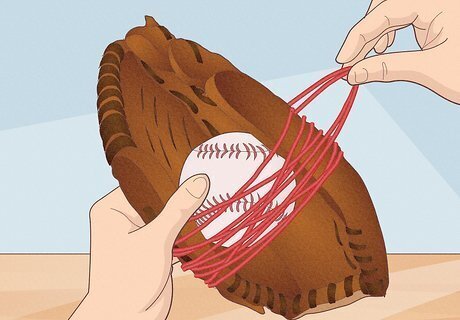
Close the glove around the ball and wrap it with the bands again. Store it for a day or two in a dark, dry spot. Choose an out-of-the-way place away from pets and small children (who might disturb the process).
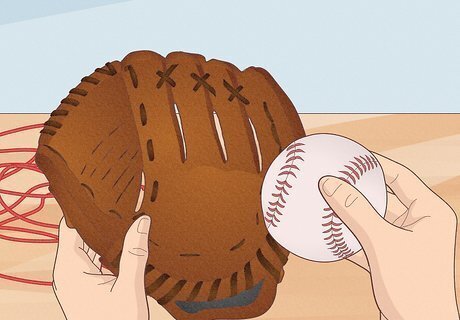
Retrieve the glove. Remove the bands and ball. Your glove should be ready for action. The more you use it, the more the glove will conform to your hand.
Steaming the Glove
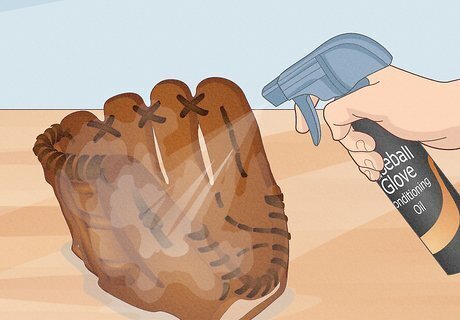
Apply a conditioning oil to the glove. Coat or spray the entire surface of the glove. You may want to apply a little extra to the laces to make sure they are adequately protected. Let the glove sit for several minutes and soak up the conditioner. Then wipe the glove with a towel until dry.
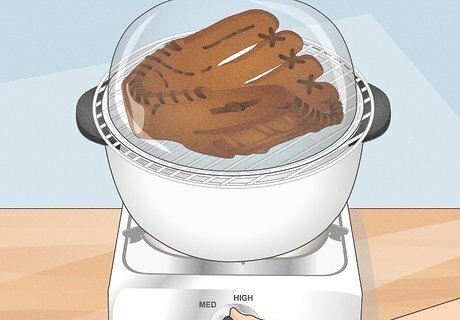
Place the glove on a rack above a pot of water and turn the burner on. Be sure to keep your glove several inches above the water to avoid splashing. Place a curved lid or a large upside-down bowl over the glove to trap the steam. Let the glove sit in the steam for two-to-five minutes, depending on how soft you want the leather. You want the temperature of the glove to reach about 150° F. Many sporting-goods stores offer professional glove-steaming services. Some will even steam a new glove for free when you buy it from them.
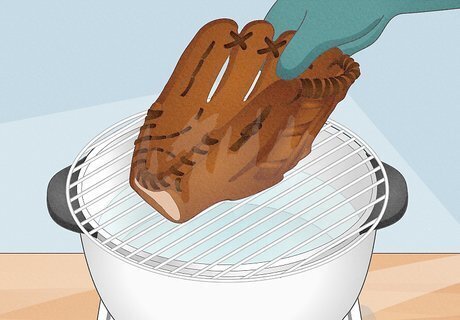
Remove the glove from the steam. Turn the stove off and wait until the steam dissipates to retrieve your glove. Dry the glove with a towel. The glove should feel much more flexible now.
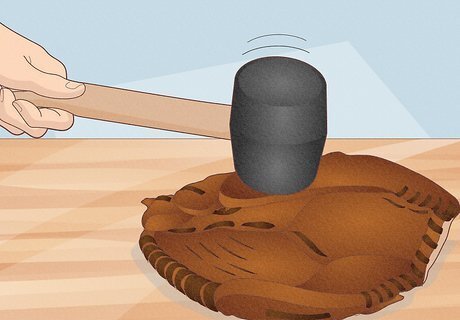
Work the glove into shape with a mallet. Fold the glove in half so the thumb is on top and hit the heel close to the thumb side with a mallet to bend the material. Work your way toward the center of the glove.
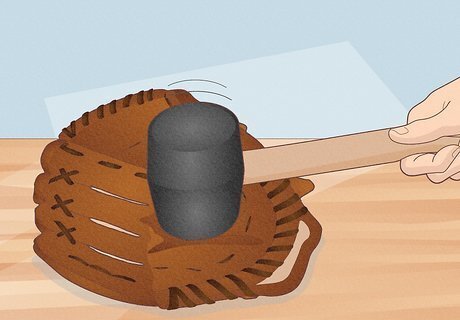
Hit the glove in the desired spot to form a pocket. Depending on your preference, you might want a deep or shallow pocket. Hit the glove near the webbing for a deeper pocket or more toward the palm of the glove for a shallow pocket.
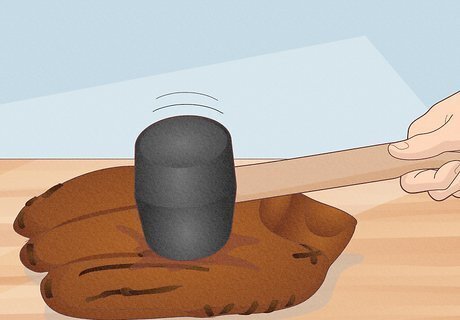
Flip the glove over and hit the heel of the glove near the pinky side. Your glove should be much easier to open and close now. Play some catch to help finish the process of breaking it in.
Using Glove Foam
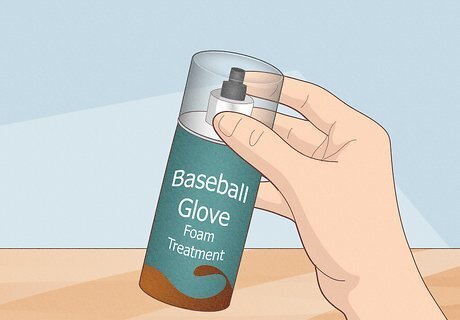
Buy a baseball-glove foam treatment from a sporting-goods store. This method is equivalent to breaking in a new glove for six months.
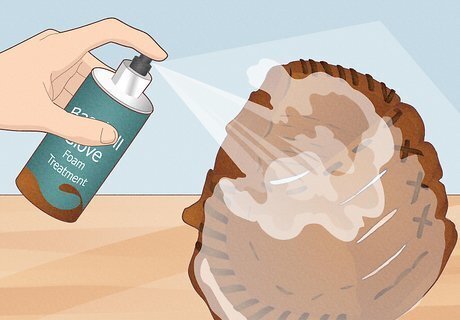
Apply the foam and lather it into the glove. Cover the entire surface of the glove. Coat the back of the glove as well. Let the material soak up the lather for several minutes.

Place the glove in a 300ºF oven for four minutes. Put the foamed glove on a cloth-covered baking sheet. Set it on the top rack of the oven. Set a kitchen timer to make sure you don't leave the glove in too long or forget to take it out.
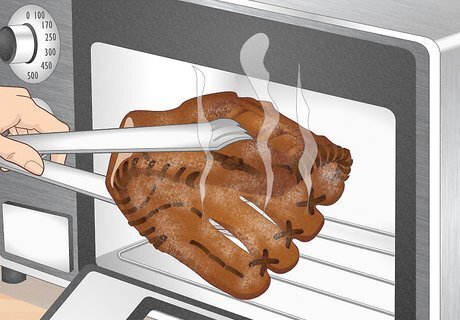
Carefully remove the glove from the oven. Allow it to cool. Wipe away any residue from the treatment.
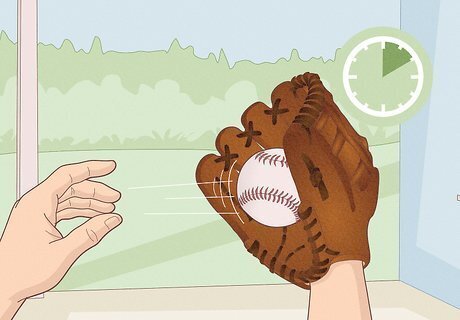
Work the glove repeatedly every which way for ten minutes or more. Insert a baseball or softball into the glove's sweet spot where you are most likely to catch the ball. Allow the glove to cool around the ball. Note: Most glove manufacturers recommend against using chemicals or heat to break in gloves. In other words, take the above steps in moderation. Too much heat or chemical treatment can ruin the flexibility and comfort inherent in leather.















Comments
0 comment